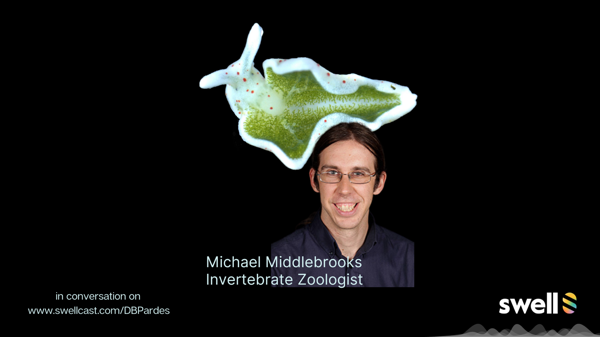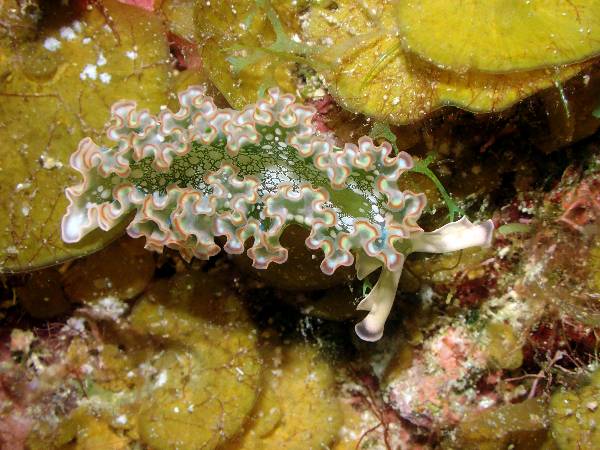
Deborah Pardes
@DBPardes · 2:35
ALL YOU NEED IS SUN : How Sea Slugs Make Zero Grocery Runs
They get energy from the sun, but it also gets sugar from that energy. And corals, as an example, do this really well. But his focus, Michael's focus is on these mullus, and they range from like snails to clams to octopi, octopi, octopus. Octopi. But he's focused on sea slugs. So everyone's questioned to him, probably when they meet him, is like, why sea slugs?
Just briefly, if you think about how something really big, like a tree photosynthesizes. They're able to do it because they have these really flat surfaces to catch light the leaves. Right. We would need something very similar. It's a surface area to body ratio issue, so I don't think that's ever very likely in addition to a whole bunch of additional biochemical complications

Deborah Pardes
@DBPardes · 2:47
Because I know that if I have like I think they call them free radicals. When you have something in your body that's open to be attached, sometimes as good, sometimes as bad, can you get to the cellular part of this and explain a little bit more about that mechanism? Thanks so much
Swell Team
@Swell · 0:15
If this were more of a permanent interaction, in the case of the slugs, we call it kleptoplasty because they steal it from the algae directly. But if it was something more permanent, where these could be passed down to the next generation, you might use the term endosymbiosis instead. So where those chloroplasts to be maintained permanently, and ultimately the chloroplasts inside of the plant and algae cells did arise through an event of endosymbiosis

Deborah Pardes
@DBPardes · 1:18
Michael. It's so fascinating to think about this system in the integrity of it. It's so self running because once they steal the Plasti and they put it in the kleptoplasty glees to the chloroplasty inside their their beings, and they can, like, refrigerate it or whatever the equivalent is to keep it fresh much longer than it would be outside
And I think that's a really good direction for us to push science in so that it is accessible, that the information is there, other scientists can use it, other people who

Deborah Pardes
@DBPardes · 1:15
Hey, Michael, thank you so much for this response. I'm sorry you got caught off a bit there, but I love that grants require that open science mentality when they're giving out their grants so that people understand that this is a stipulation and it really contributes to this culture that you're talking about. Speaking of this culture, I want to wrap this up, first of all, by saying I really am happy you're here


